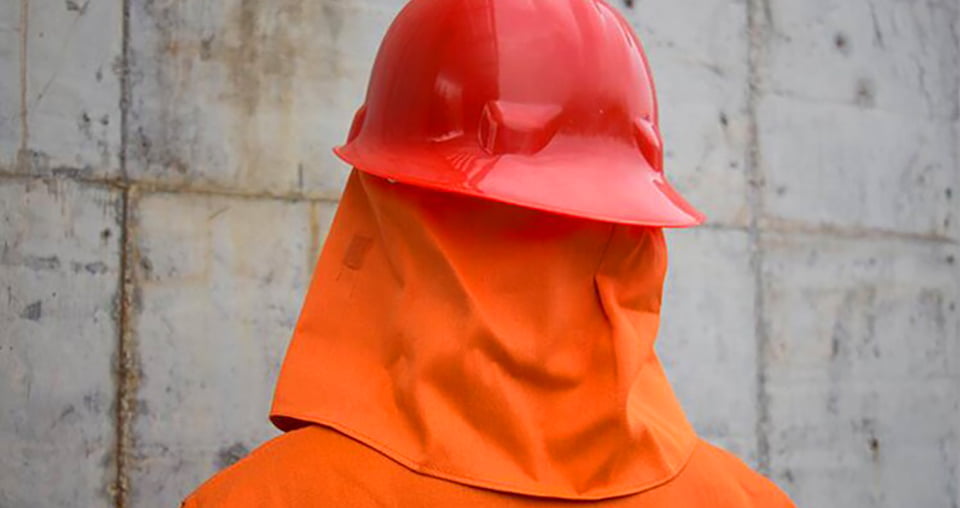Table of Contents
What is ISO 11612?
The manufacturers who are certified can protect the wearer, if they wear the cloth, from fire and heat. Furthermore, this standard only extends to textiles designed to shield people from burning.
There is an exception, however, for such materials as hoods, other head coverings, hand coverings and other related clothes not subject to ISO 11612 certificate. It is safer to bear additional protection in these areas when wearing materials that do not come under this certification.
In addition, fabrics certified for factory jobs, electrical employees and other related occupations are best.
The norm discusses the safety of clothes, fabric and associated accessories in contact with fire and flames. Moreover, under this standard, 11612 fireproof tissue explores weather tolerance, shrinkage and life of the tissue.
The test takes place in labs in an environment that can be regulated. The objective of this Universal Standard is to adopt the minimum requirements for clothing that can be used to protect against high temperatures and fires for a wide variety of end uses.
For several of the hazards under EN ISO 11612 there are three performance standards:
Level 1: Minute risk statement
Level 2: Moderate risk indications
Level 3: High-Risk Indication
What is ISO 11611?
This basic specification is intended to include security specifications and ways of analyzing safety materials like aprons, hoods, guides and sleeves.
These materials shield the head, arms and feet of the wearer from welding and associated processes when they are at risk. Hand protective clothing does not come under this standard, since other guidelines cover this section are available.
Workers operating in dangerous surroundings shall, through approval of EN ISO 11611, have protection against sparks, fire, and electric shock caused by naked wiring of electrical conductors. To ensure optimal safety, the workwear must cover the whole body.
A jacket and matching pants are efficient and consist of FR fabrics for best fire and heat protection. We suggest additional shielding for the arms, hands and front of the garments while using welding techniques that produce a lot of sparks.
In safety clothing requirements, ISO 11611 certificate to, only a limited number of pockets and other functions are included. In accordance with ISO 11611 certification, only a minimum of pockets and other features are included in safety clothing requirements to reduce sparks in wear and therefore avoid contact with skin by sparks.
The measurement of the capacity of textile to protect against fire and heat includes this standard. The clothing can be classified into two grades, class 1 or class 2 to defend against less risky tactics and situations.
Fireproof fabric’s FR tolerance depends on class 1 or class 2. The standard contains other construction requirements as well as the need to cover closures with compatible fabric flaps, apart from the specified fire and heat checks.
Why do we have these standards?
It is crucial to bear in mind when talking about FR fabrics, that these fabrics are the limit for a vast number of people between life and death. A worker’s life can be distressing without these materials.
We have to keep a check and balance with ISO 11612 and other guidelines to ensure that these fabrics are kept up-to-date so that we are aware of the fabric when it is required. The norm enables one to inspect various parts and facilities. These standards are developed such that consumers can only sell the best cloth.
Are these standards important?
These standards are part of strict clothing laws and no fault is missed during training according to these standards. Each test has its own purpose, so it helps to uncover its secret shortcomings and the boundaries of certain fireproof fabrics.
The limit these textiles can withstand in determining their quality and grades. In addition, the test differs in accordance with ISO 11612, but it is also the same purpose as measuring the cloth as simply as possible.
The material cannot be tested in accordance with EN ISO 11611 minimum requirements. Substances are rejected if testing loss happens. Premium textiles exceed daily textile thresholds.
In addition these ISO 11612 test the cloth for insights into all potential points of collapse in extreme environments such as molten metal splashes, fire exhibition, heat from the electrical arc in welding, and electric shock.
If the FR fabric is of high quality, it can survive fire and sweat, dirt and other pollutants. In any industry, fireproof fabrics are important because they certify their risks of decreasing life risks.
It is essential to protect human life as far as it is in the world as possible and ISO 11611 helps to fulfill this goal. A textile with this certification is long-lasting and credible.







